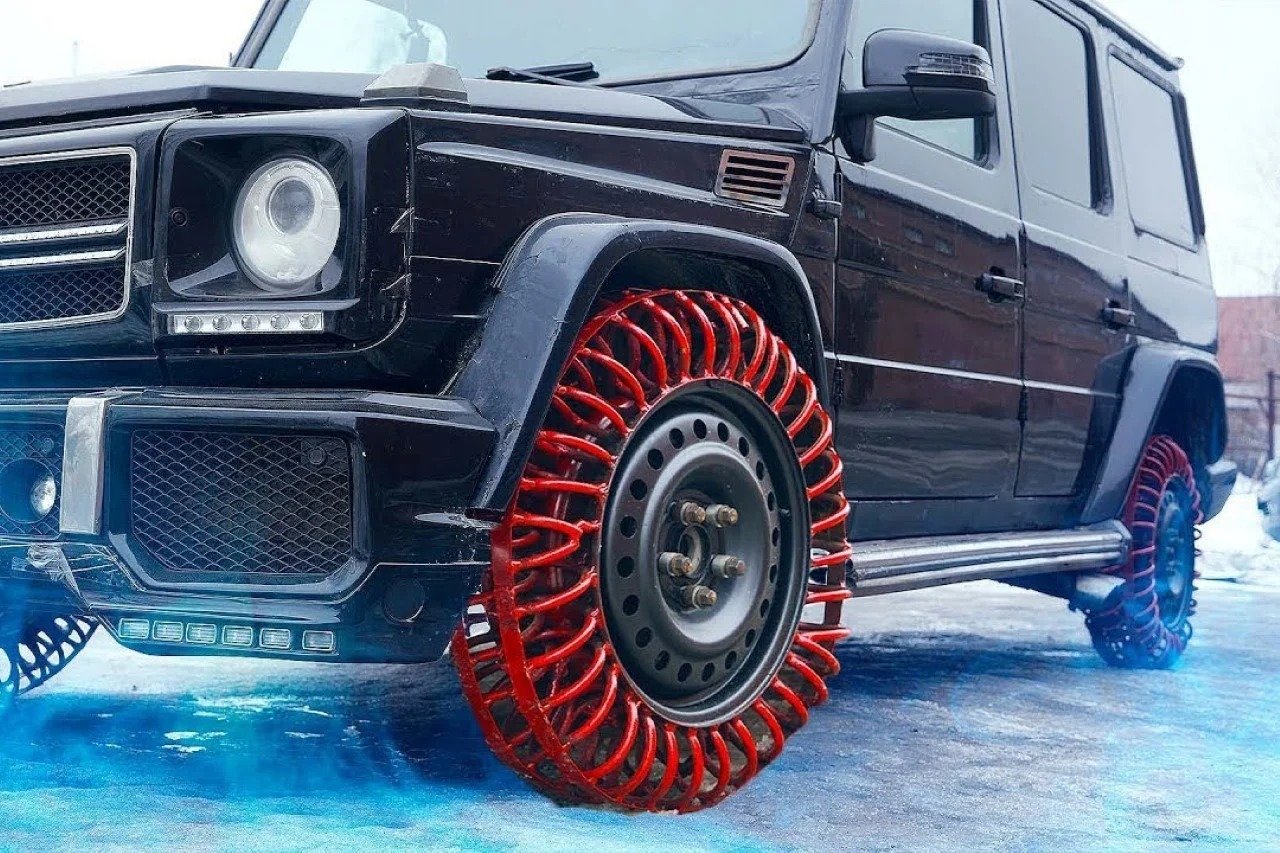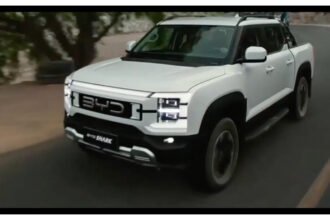Will spring tires double the power of the car? The New Innovation Imagine if your car tires are made up of springs and not air filled this is hard to imagine right but Germans even experimented with spring tires in the 1900s during rubber shortages, but soon reverted back to good-old air-filled rubber tires soon thereafter, sticking to it when they developed the autobahn too.
So it is quite possible, Moreover, spring tires would be more durable, wouldn’t require air, and could therefore never get punctured. If you see spring tires have very positive aspects only that way they should be used in place of Air filled tires. After the Germans tried spring tires now A YouTuber by the name of Garage54 decided to put this experiment to the test just to see how things would play out.
Instead of rubber treads, G54’s car was outfitted with wheels made of springs in the hopes of being able to travel well on snowy roads and off-road trails. Guess what the test failed because metal doesn’t make a good rubber substitute, and also because G54 quite literally welded springs to his tire.
Garage 54 embarked on an ambitious project inspired by historical experiments conducted by German engineers. Motivated by the prospect of replacing traditional pneumatic tires with innovative spring-based counterparts, Garage 54 encountered numerous challenges throughout the endeavor. Undeterred by obstacles, the initial phase involved meticulous preparation, including the meticulous process of affixing springs onto the wheel.
This procedure entailed precise sanding of the wheel surface, strategic bending of sizable springs, and secure welding to ensure firm attachment. To mitigate potential infrastructure damage caused by direct spring-ground contact, an additional metal strip was meticulously welded around the rim. Furthermore, to enhance visibility and safety, the newly modified tires were coated with vibrant red paint.
During the testing phase on sludgy snowy terrain, Garage 54 encountered significant challenges with the modified vehicle. Firstly, the inherent low friction properties of metal hindered traction, resulting in rotational inertia and lateral slippage rather than effective forward propulsion. Secondly, the substantial weight of the steel spring tires, compared to conventional rubber and air-filled counterparts, exacerbated the vehicle’s sinking tendency into the snow, particularly when stationary.
Additionally, the hollow structure of the spring tires allowed snow accumulation, further increasing the overall mass of the vehicle. Moreover, the design flaw led to the entrapment of debris such as twigs and branches, compounding operational difficulties. Furthermore, the modified wheels failed to provide substantial enhancements in suspension performance, undermining the intended improvements in ride quality and stability.
While the initial experiment proved unsuccessful, it highlighted areas ripe for refinement in the development of spring-based tire technology. Despite the setback, the underlying concept remains viable, offering potential avenues for real-world application. Moving forward, a comprehensive research initiative coupled with enhanced implementation strategies is crucial for realizing the full potential of spring tire technology. By addressing identified shortcomings and leveraging technological advancements, a more robust and effective iteration of the spring tire concept can be achieved, paving the way for its successful integration into automotive systems.


















